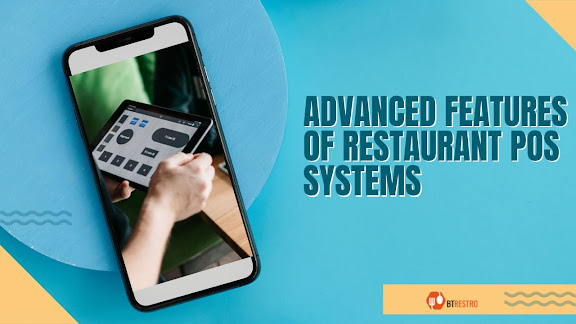"Managing Complexity - The Art of Restaurant System Management"
The complexities of running a restaurant, from handling reservations and inventory to ensuring top-notch service, can be overwhelming without the right tools. This is where restaurant management software steps in to simplify and streamline operations. In this comprehensive guide, we'll explore the intricacies of restaurant system management and how restaurant management software can be a game-changer in this context.
Understanding the Complexity
The Multifaceted Restaurant Landscape
Managing a restaurant is akin to conducting a symphony. There are multiple elements, each with its own rhythm, and they all need to harmonize to create a beautiful experience for your guests. Consider the various aspects:
Front-of-House Operations: This includes managing reservations, seating guests, and ensuring exceptional customer service.
Back-of-House Operations: The kitchen, inventory, and staff management are critical components that influence the quality of the dining experience.
Financial Management: Tracking expenses, revenue, and profitability is crucial for the sustainability of your restaurant.
Marketing and Promotion: Attracting and retaining customers requires effective marketing and promotional efforts.
Compliance and Regulation: Restaurants must adhere to various regulations related to food safety, labor laws, and more.
The Role of Restaurant Management Software
Now, let's dive into the role of restaurant management software in managing this complexity:
Streamlined Operations: Restaurant management software automates many tasks, such as table assignments, reservations, and order processing. This streamlining frees up your staff to focus on delivering exceptional service.
Data-Driven Insights: Advanced software can collect and analyze data from various parts of your restaurant. This allows you to make informed decisions about menu changes, staffing levels, and pricing strategies.
Inventory Management: Keeping track of perishable and non-perishable inventory items can be a headache. Restaurant management software helps you maintain optimal stock levels, reducing waste and costs.
Improved Customer Experience: From personalized service to efficient waitlist management, software tools can elevate the dining experience, turning first-time visitors into loyal customers.
Mastering Restaurant System Management Techniques
Training and Onboarding
Effective use of restaurant management software begins with proper training. Staff members should be familiar with the software's features and functionalities. Encourage questions and provide ongoing support to ensure that your team can navigate the software confidently.
Front-of-House Staff: Train hosts, waitstaff, and bartenders to use the software for tasks like reservation management and order entry.
Kitchen Staff: Chefs and kitchen staff should be proficient in order management and inventory tracking aspects of the software.
Management Team: Your management team should be well-versed in the software's reporting and analytics capabilities to make data-driven decisions.
Regular Updates and Maintenance
The restaurant industry is dynamic, and so is restaurant management software. To stay ahead, it's crucial to keep your software up-to-date. Updates often include bug fixes, security enhancements, and new features that can further improve your operations.
Bug Fixes: Updates address software bugs that may affect your restaurant's efficiency. Timely fixes prevent potential disruptions in your workflow.
Security Enhancements: Cybersecurity is a growing concern. Software updates often include security patches to protect your sensitive data from potential threats.
New Features: Stay informed about new features that can enhance your operations. Whether it's improved reporting or integration with other tools, these updates can offer valuable benefits.
Integration with POS Systems
Point of Sale (POS) systems are the backbone of restaurant operations. They handle transactions, inventory, and more. Integrating your restaurant management software seamlessly with your POS system is crucial.
Real-Time Data Sharing: Integration enables real-time communication between various parts of your restaurant. When an order is placed, it can instantly update inventory levels and trigger kitchen processes.
Reduced Manual Entry: Manual data entry is prone to errors. Integration eliminates the need for duplicate data entry, reducing mistakes and saving time.
Holistic Insights: By integrating data from your POS and restaurant management software, you can gain comprehensive insights into your business's performance, helping you make strategic decisions.
Workflow Analysis and Optimization
Efficiency improvements come from a deep understanding of your restaurant's workflows. Use restaurant management software data to analyze and optimize processes continually.
Identify Bottlenecks: Identify areas where bottlenecks or inefficiencies occur. For example, long wait times for certain dishes may indicate a need for kitchen process adjustments.
Staff Scheduling: Optimize staff schedules based on historical data and predictive analytics to ensure adequate coverage during peak hours.
Resource Allocation: Efficiently allocate resources like tables, staff, and kitchen equipment based on demand and historical data.
Conclusion
In the intricate dance of managing a restaurant, restaurant management software is your trusted partner. It simplifies the complexities, allowing your staff to focus on what matters most—delivering an exceptional dining experience to your customers.
Through proper training, regular updates, seamless integration with POS systems, and continuous workflow optimization, you can master the art of restaurant system management. Embrace these techniques and watch as your restaurant thrives in an industry where efficiency is the key to success. Managing complexity becomes an art, and with the right tools and techniques, your restaurant can achieve excellence in this ever-evolving landscape.




Comments
Post a Comment